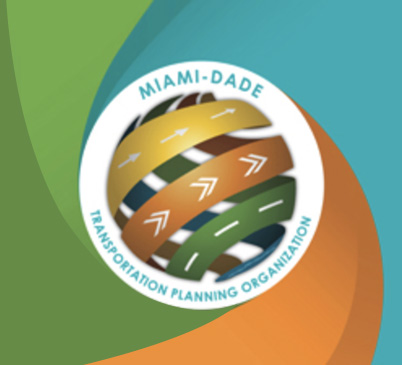Recent Analysis & Studies
The proposed Unity Station is the northern termini station for the SMART Plan North Corridor located at the intersection of NW 215th Street & NW 27th Ave / Unity Blvd. To support the accessibility to the proposed station and the development potential at the station area, the Miami-Dade TPO conducted the NW 215th Street Mobility Hub Study.
The study area for this project encompassed a 3-mile radius from the proposed Unity Station. The goals of the study included gathering data on existing accessibility conditions in the study area through observation and stakeholder input, analyzed opportunities for enhanced accessibility and connectivity, identified and ranked proposed improvements, and provided final recommendations and funding opportunities.
The study considered a variety of transportation enhancements to the multimodal network, which were organized as intersection improvements, complete streets, greenways/trails and bicycle and pedestrian improvements. The study evaluated fifteen (15) projects that were later prioritized to seven (7) projects, based on network connectivity, safety enhancement, and local support.
As climate change continues to alter weather patterns and increase the number of natural disasters, Miami- Dade TPO is taking a proactive approach to prepare transportation infrastructure projects during the planning and programming process. Climate resilience refers to the ability of the transportation system to anticipate, prepare for, and adapt to any disruptions related to the climate or extreme weather.
The objective of the Climate Resiliency Study is to evaluate potential risks within the transportation system to understand future needs within the 2050 Long Range Transportation Planning (LRTP) process. This study also reviewed ways to support the usage of alternative fuel vehicles (AFVs), and their associated infrastructure to reduce carbon emissions. The study used the Sea Level Scenario Sketch Planning Tool (SLS Sketch Planning Tool) created by the Florida Department of Transportation (FDOT) and the University of Florida (UF) and the National Risk Index (NRI) tool created by the Federal Emergency Management Agency (FEMA) to complete this analysis.
- Focus Area 1: SW 57th Avenue/SW 72nd Street
- Focus Area 2: S Alhambra Circle
- Focus Area 3: Granada Boulevard
- Focus Area 4: SW 42nd Avenue (Le Jeune Road)/Blue Road/Grand Avenue
- Focus Area 5: SW 37th Avenue/SW 40th Street
- Focus Area 6: SW 27th Avenue
The Village of Palmetto Bay completed their Multi-Use Trail & SMART Plan Connectivity Study through the Miami-Dade TPO’s SMART Moves Program. This feasibility study for multimodal improvements aimed to enhance mobility, safety, and accessibility to the South Dade TransitWay between Old Cutler Road and US 1/South Dixie Highway, supporting the SMART Plan.
This study included a review, analysis, and evaluation of four primary east/west corridors within the Village of Palmetto Bay: SW 144th, 152nd, 168th and 184th Streets. Through evaluation and public and stakeholder outreach efforts, SW 152nd Street and SW 184th Street were selected as the two corridors in most need of multimodal improvements. Through a review of existing planning documents, data collection and analysis, and public feedback, three alternatives for both corridors were identified. One alternative per selected corridor was recommended for implementation by the Village Council.
Miami-Dade County’s northwest Transportation Planning Area (TPA) plays a vital economic role for the entire Southeast Florida region. This area accommodates a significant amount of industrial land use due to its prime location, zoning, and efficient connections with PortMiami, Miami International Airport (MIA), and the region as a whole.
The Miami-Dade TPO conducted a study which examines the current and projected travel patterns within the northwest TPA, providing insight into the effects of the projected growth and identified infrastructure improvements. In particular, the effect of the extension of NW 107th Avenue from NW 106th Street to NW 122nd Street in regards to local travel patterns is analyzed and documented. In addition, and building upon this analysis, potential projects have been identified that can improve the mobility within the TPA.
Three types of potential mobility improvements were identified including: a transit project, the identification of multiple areas where mobility could be improved using micro-mobility, bicycle and pedestrian modes, and two roadway projects.
This study evaluated emerging tunnel technology and recommended transit tunnel corridors for the advancement of mobility options in Miami-Dade County. The tunnels are proposed for use by electric multi-passenger transit vehicles to accommodate a range of up to 60 passengers. Among all methods, tunnel construction by excavation by Tunnel Boring Machine (TBM) is the preferred tunneling method for its ability to cause the least amount of (if any) surface disruption.
This study used a three-tiered analysis using the Long Range Transportation Plan (LRTP), the Transportation Improvement Program (TIP), previous studies, and other corridors to develop a base network for tier 1. Twenty-five corridors were recommended based on cost, land-use, mobility, and technical criteria during the tier 2 analysis. Ultimately, six LRTP priority corridors and two Strategic Miami Area Rapid Transit (SMART) corridors were recommended for further study under the tier 3 analysis next steps.
The Systemwide LOS Analysis has been developed to evaluate the performance, observed trends, and capacity of the existing transportation system network in Miami-Dade County. This study updates the existing conditions for State and County roadways, transit, and nonmotorized facilities, and focuses on the County’s facilities to determine if they meet the current travel demands.
The assessment of multimodal system needs and recommendations will support the development of program priorities and will be used to update future transportations plans, such as the 2050 Long Range Transportation Plan (LRTP), the Transportation Improvement Program (TIP), and the Transit Development Plan (TDP).
